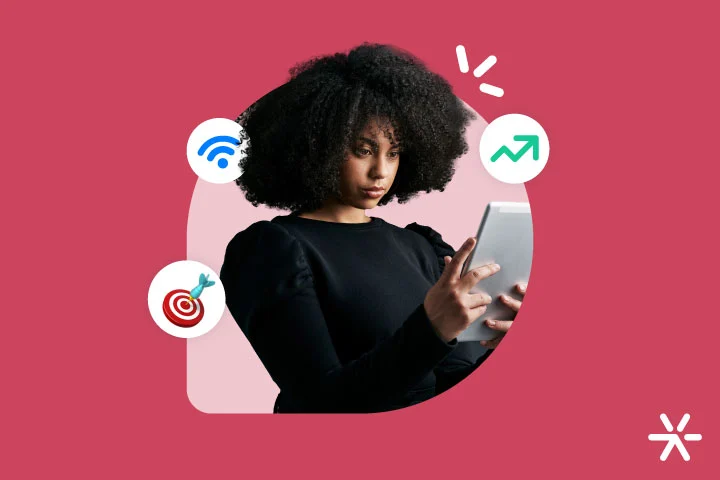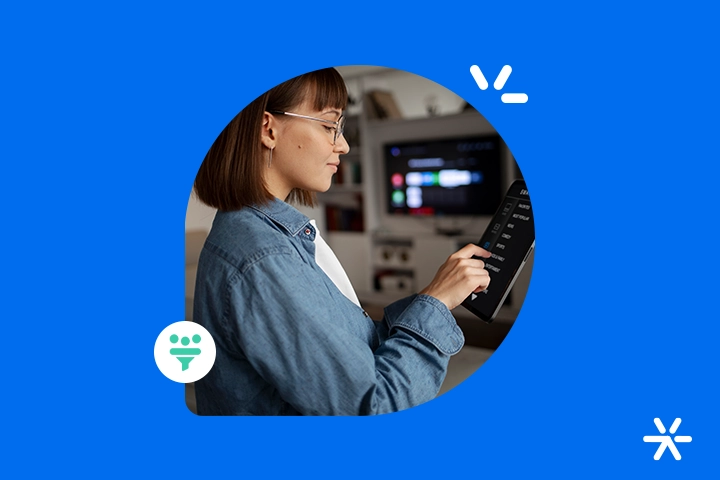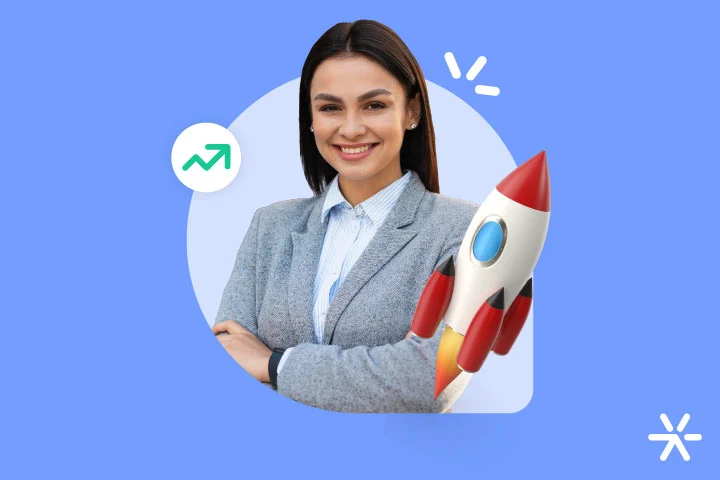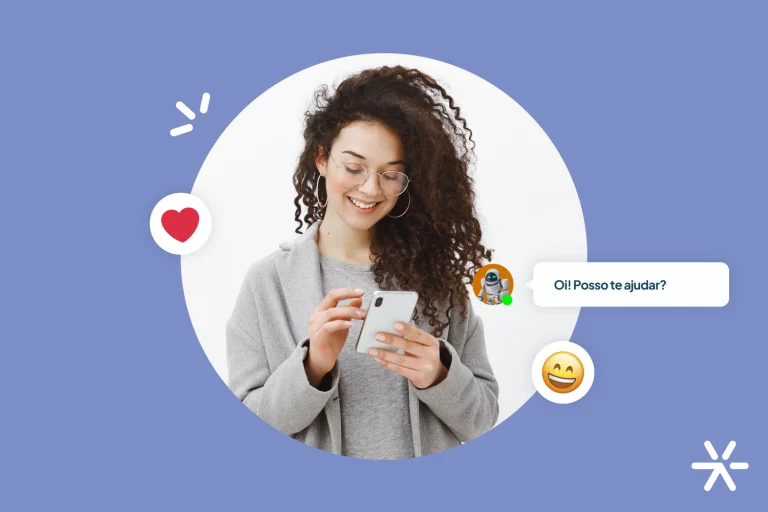Tourism Marketing: Generate More Leads with AI and Digital Marketing
Tourism marketing, or travel marketing, is a practice that all travel agencies need to implement.
This sector presents significant challenges and even greater opportunities. And fortunately, the investment in marketing doesn’t have to be that large.
This might shock some people working in tourism marketing, but it’s true. Simple strategies can achieve impressive results.
However, well-planned and structured strategies can deliver even better results.
Today’s article is about that: we’ll explore the challenges and opportunities in tourism marketing, and then we’ll look at both the simplest and most advanced strategies for the segment.
All with a total focus on lead generation. Shall we begin?
What are the main characteristics of tourism marketing?

First of all, we need to better understand the sector to begin our analysis.
The first point is understanding who needs tourism marketing. Not necessarily the target audience, the tourists, but those who are doing the marketing.
In this article, we are primarily focusing on travel agencies that need more leads to sell their packages.
But the tips we’ll provide here are also applicable to other scenarios. They are useful for:
- City tourism boards;
- Owners of specific tourist attractions in cities;
- Hotel and Airbnb owners;
- Event venue owners;
- And everyone who primarily works in tourism or relies on tourism as their main source of income.
However, the main focus of this article is Inbound Marketing and Content Marketing, along with lead generation.
In this context, those who benefit the most are companies with a good sales team and a marketing team that understands and applies these strategies.
With that understood, we can now discuss the main characteristics of tourism marketing.
Follow along below:
Tourism marketing typically operates with a website
This is the most basic point of what tourism marketing usually delivers and how it typically works.
Are there agencies that operate only with an Instagram profile and a physical space? Certainly.
But the market standard is to have a complete website that lists all the available destinations and packages.
This is because it’s quite challenging to rely on a platform like Instagram for this type of promotion.
Instagram has its positives, but its biggest drawback is that the layout isn’t yours and isn’t customizable.
You can make posts here and there, but a website allows the person looking for something specific to find it more quickly.
This is the first major characteristic of tourism marketing. But since we’re talking about social media:
Tourism marketing heavily utilizes social media
But even with websites, tourism marketing still heavily relies on social media to bring more people into contact with its products.
The issue is that there are different ways to do this.
Social media in tourism marketing is used to showcase destinations, share content, promotions on packages, etc.
Tourism marketing doesn’t live off social media, of course. But a good profile can bring many potential customers, even if it doesn’t generate leads in a standardized and measurable way.
But this is basic, and you probably already know it. Another point worth mentioning is what is shown on social media.
The next two items are about that.
Tourism marketing is highly visual on social media
On social media, tourism marketing is about showcasing images of your destinations.
Of course, there are opportunities to show packages and promotional prices. But the images truly win the prize as the strategic resource that most effectively generates inquiries on the platform.
The reason is simple: travelers want to see destinations, not packages. The package is a commercial detail, and most people on Instagram are still at the Top of the Funnel.
The more images you post of the destinations you work with, the more interesting content you’re generating.
And in these images, it’s common for the caption to provide more details about the destination, sparking curiosity and desire in those viewing it.
Another strategy that takes this much further is influencer marketing and UGC in tourism. More on that now:
Using travelers as tourism marketing
What’s the natural progression of using images of the destinations that the travel agency offers on Instagram?
Showing that your travel agency provides a well-done trip is like this: by showing happy people at the destination.
This can be done in various ways, but it usually happens through UGC — User Generated Content.
The photos are often taken by the travelers themselves, who tag the agency, and the agency then reposts them.
The social proof in these cases is undeniable. This is the standard. Another example is just below:
Another strategy to generate this type of content is by working with influencers.
Influencers work by producing UGC. New agencies often start here due to a lack of customers taking photos or because they haven’t yet organized large group excursions.
Look for travel influencers, those whose content already takes them to various corners of the country.
These already have a specific audience geared towards the travel consumer.
Tourism marketing has many opportunities for lead generation
Tourism marketing also has this characteristic. It has many opportunities for lead generation.
Of course, all brands have the potential to generate leads, but the calculation we need to make involves both the opportunities and the complexity of generating them.
In the tourism sector, it’s common to request quotes for destinations or travel itineraries. And this is best delivered via email, WhatsApp, or in person.
That’s precisely why the opportunities for lead generation are greater in this channel.
With an email or phone number, you’ve already achieved conversion. And the vast majority of quote requests are made through these channels.
So, the natural functioning of tourism marketing already promotes lead generation.
But stay with me because, throughout the article, we’ll discuss lead qualification, which is very important in this channel precisely because of its characteristic of generating leads almost passively.
Tourism marketing: Inbound or Outbound?
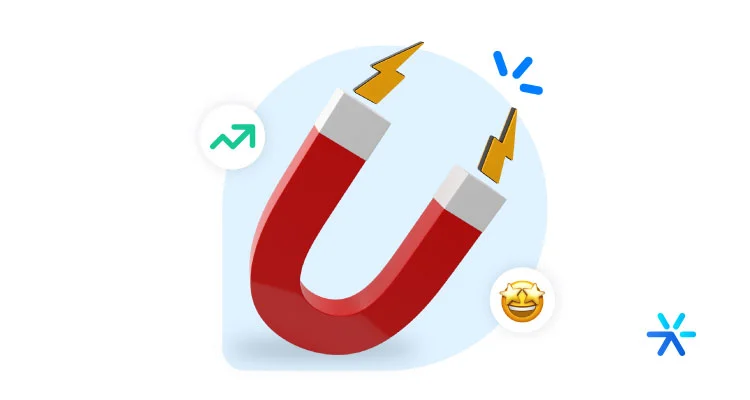
Both, of course.
With all this lead generation potential, tourism marketing works best when both Inbound and Outbound tactics are applied.
By the way, this is also due to the characteristics of the sale, which is more complex, and the product being offered.
However, there is an easier and less costly way to apply Inbound and Outbound together in Tourism Marketing: using digital marketing.
Billboards, flyers, and cold calling are still valid strategies for tourism marketing, but they don’t provide easy-to-measure metrics.
While digital marketing operates at a fraction of the cost of these types of actions and can still deliver a large volume of qualified leads to agencies.
And that’s what should concern you the most: lead generation.
Let’s discuss this further below.
Inbound Marketing in tourism marketing
It’s clear that engagement in tourism posts that show locations is very high.
With 350 likes and dozens of comments, many of them asking commercial questions, lead generation almost happens automatically in these posts.
But it’s still necessary to seek more leads and qualify them. And then, place the qualified leads into your Marketing Funnel.
This is how tourism marketing can take advantage of this accelerated generation. And that’s why Inbound Marketing is the best choice for the segment.
Remembering also that satisfied people with a package will always prefer the agency that took them rather than look for another they don’t yet know.
This makes tourism marketing one of the most interesting areas to work with inbound marketing. The product, the form of interaction, and the post-sale almost demand an Inbound strategy.
But how to execute it? In the next items, we’ll discuss:
- Lead generation directly on the website;
- Utilization and qualification of social leads;
- How to create a nurturing flow and a communication timeline;
- How to close inbound sales;
After that, we’ll move on to outbound strategies, which will mainly revolve around paid media.
And even after that, we’ll conclude the article with post-sale and repurchase strategies.
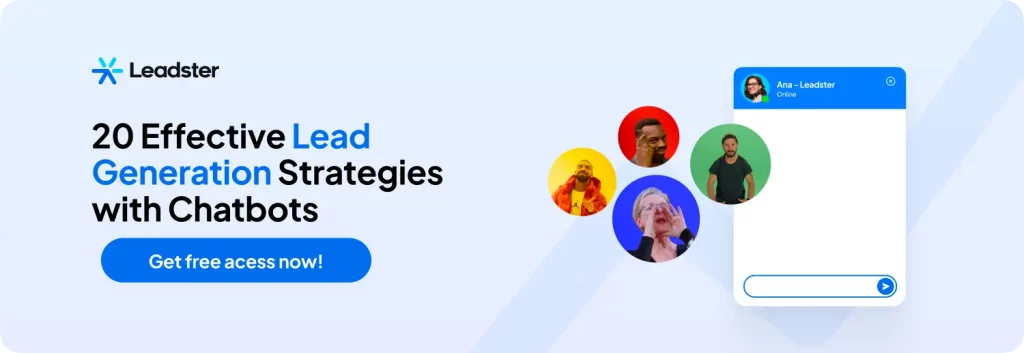
How to Generate More Leads on the Travel Agency’s Website?
Generating qualified leads directly on the website requires a combination of content marketing and instant customer service.
This is within the Inbound strategy, which primarily works with Organic Traffic to attract visitors who will be converted into leads.
Many agencies use Google Ads and Meta Ads to bring visitors to their site, but this is an Outbound strategy that we’ll discuss later.
The first step is to attract visitors to your site. This is mostly done through content, which can include:
- Articles on the agency’s blog;
- Instagram posts that lead to the site;
- YouTube videos that drive traffic to the site;
- The same applies to TikTok and other social networks;
- Advertisements in general.
This is enough to bring more visitors to your site, but the work is somewhat arduous and takes time. Expect a return on investment within 6 months to a year.
And when visitors arrive on your site, it’s time to convert them. The best way to do this is with an AI-powered chatbot, like Leadster’s.
Our system, supported by ChatGPT, can direct visitors to materials, budget areas, promotional packages, newsletter subscriptions, and more—whatever you need.
And all of this happens automatically. The chatbot is simply installed on your site, you create workflows for each stage of the Funnel, and voila: you’re generating leads from visitors.
But what to do with these leads? How do you know which ones to invest more resources and effort in? This is where lead qualification comes in, our next topic:
Lead Management and Qualification
As we’ve seen, travel leads come from various sources.
They come from Google, paid media, social media posts, recommendations from other travelers, and so on.
The question is what to do with all these leads. Experienced marketers have likely already thought of the Nurture Flow, right?
But there’s a prior step: qualifying the leads. How do you know if they are the right fit for your brand?
For example, if you only sell complete packages with a minimum one-week stay, you won’t want to work with leads looking for day trips, lasting just one to three days.
This is initially resolved through lead qualification, a task that begins before the Nurture Flow but is also carried out during this Flow.
Initially, the ideal is to convert and qualify your leads simultaneously. Those converted on the site are simple: with a chatbot, the moment of generation is the moment of qualification.
With the questions you ask in the chatbot, it’s possible to determine if the lead is right for you at the moment or not, without needing to send emails and qualify later.
By the way, since we’re on the subject of emails, shall we talk about the Nurture Flow as well? Follow along below:
How to Set Up a Nurture Flow and Communication Timeline
A Nurture Flow is the method used to guide a lead to purchase, usually through email marketing, SMS, WhatsApp chatbots, and even direct calls, depending on the lead’s stage in the funnel.
The Communication Timeline is similar and often used synonymously with Nurture Flow.
The difference is that the Timeline can be used in other cases, as we’ll see later, while the Nurture Flow is specific.
In this Flow, you will determine how to approach the lead to move them forward in your funnel.
The topic is extensive, and we’ve already discussed it here on the blog. Here’s a heads-up: it’s well worth diving into the article below.
➡️ What is Lead Nurturing and How to Create Your Nurturing Workflow
How to Close Inbound Sales
Inbound sales are those made within this Nurture Flow.
There comes a time when it’s no longer necessary to send personalized emails or messages but rather to close the sale.
This usually happens when the lead reaches the SQL stage—sales qualified lead.
This means that the marketing team has already maximized the lead’s qualification, working with Lead Scoring to understand how close the lead is to making a purchase.
❗ Important: What is Lead Scoring and How to Apply It to Optimize Sales
Closing an Inbound sale is a quick process preceded by a much longer one. Everything you’ve been working on so far should culminate in a direct contact between the sales team and the lead.
❗ Also Important: How to Convert Cold Leads into Hot Leads?
Usually, after the lead reaches this stage of being ready for a commercial approach, the sales team calls or starts sending direct emails with promotions.
In the tourism sector, much of this is done through marketing automation.
It’s not very common for travel agencies to call leads offering packages. But it is common for sellers to send new promotions via WhatsApp and email, especially for those who have already gone through the Funnel once and are now ready for a repeat purchase.
This is the subject of the next item. But first, a recommendation for an article that exclusively discusses the handover from the marketing team to the sales team:
➡️ MQL and SQL: What They Are and How to Classify Your Leads in 2024
Outbound Marketing in Tourism Marketing
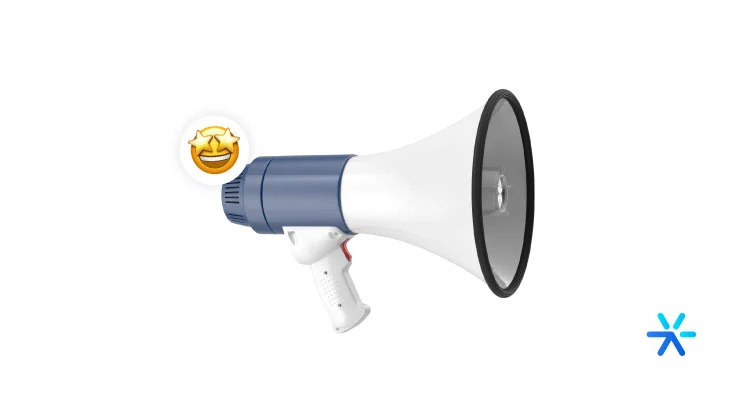
Outbound strategies in tourism marketing are not as advanced as Inbound strategies.
The thing is, the Outbound methodology itself is not that complex. In most cases nowadays, companies employ Outbound mainly in Paid Media.
Just a basic distinction to avoid confusion: Outbound Marketing is also known as interruption marketing.
This doesn’t necessarily carry a negative connotation. It’s just the way it operates: your customer receives your brand’s ads without searching for it.
It’s the opposite of Inbound Marketing. Here, your audience seeks out your brand and interacts with it spontaneously—through social networks, searching for something on Google, etc.
With this definition, we can understand that it’s entirely possible to mix the two methodologies. In fact, that’s what most companies do today in digital marketing.
But how? Through Google Ads and Social Ads.
More on that below, with article suggestions to dive deeper into both methodologies:
Google Ads for Tourism Marketing
There are different ways to work with Google Ads.
One is to advertise your packages and destinations, a full Outbound approach.
Here, your leads will already come with interest qualification: they saw your ad and were interested in your offers.
This, in itself, makes these leads easier to convert. It’s a Bottom of the Funnel approach, generating leads closer to the sale, but of course: at a generally high cost.
Google Ads operates through keywords and click bidding. You choose which terms to appear for on Google, and each term has a different price.
Every time someone clicks on your ad, you’ll pay a price according to that keyword’s value.
So, Bottom of the Funnel keywords tend to be much more expensive, precisely because it’s easier to convert sales with ads at this stage. Competition increases, and so does the price.
Another strategy is to use Google Ads as a complement to Inbound Marketing, aiming to generate leads.
This is when you set up ads for webinars, e-books, videos, even articles on your blog.
Here, you’re investing but not seeing immediate results. But at the same time, your keyword costs are much lower.
Social Ads for Tourism Marketing
Social Ads are fantastic for tourism marketing.
As we saw earlier, the work done on social networks brings immense results for agencies.
This happens because tourism marketing content fits very well with social networks. Instagram, for example, loves travel photos.
Typically, the work done in Social Ads revolves around Meta Ads—Facebook and Instagram.
Travel agencies use their paradise-like photos to launch promotions and advertise their tours.
Unlike Google Ads, which still requires the user to search for the term, Social Ads are entirely interruptive, full Outbound.
That’s because the user received your ad without searching for you or what you offer.
Because of this, the approaches are usually more Middle to Bottom of the Funnel.
In the Middle of the Funnel, it’s common to find ads showcasing the company’s structure, how the trips work, what types of packages are available, etc.
While at the Bottom, prices, special conditions, promotions, etc.
How to Do Post-Sales in Tourism Marketing
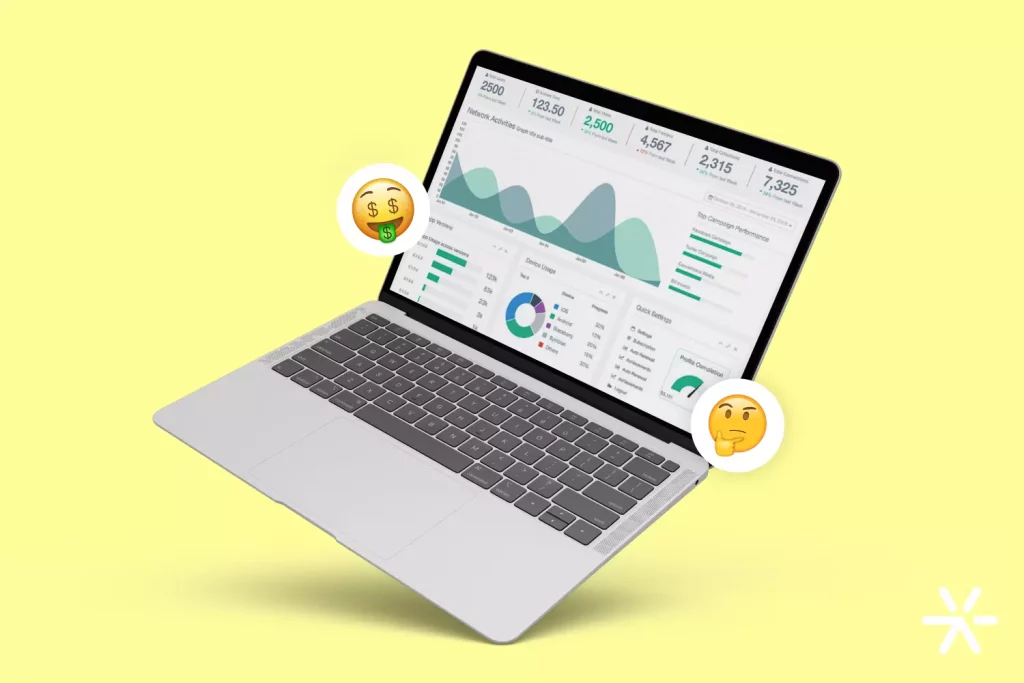
Post-sales is a very important task in tourism marketing, directly related to your ability to generate more sales through repeat purchases.
Consider the situation of someone who buys a package from you. This customer needs to think about many things:
- Passports;
- Picking up tickets on the correct date;
- The check-in process;
- Hotel reservations;
- Knowing how to get to the tour locations;
- Among many other points that depend on the trip itself. It’s a lot of information, and relying on the support of the travel agency is so crucial that it becomes expected.
Let’s discuss these post-sales strategies in more detail, which in this segment do more than encourage repeat purchases—they ensure a smooth and safe trip.
This is what stimulates repeat purchases.
Support with Dedicated Consultants
Post-sales should follow what led the customer to close the sale. If the sale was made locally, with the support of a consultant, that consultant should continue the service until the trip ends or introduce the client to dedicated support.
This is not very common in large agencies, but it’s a major differentiator for small agencies.
This close relationship allows the client to feel the quality of your service and shows the professional that they will not be abandoned after making a purchase.
For large agencies, this role usually falls to a Customer Success team.
Ticket and Voucher Reminders
As we saw above, customers need to handle many things during the trip.
A standout point for any agency is this: reminding customers when it’s time to pick up tickets, make hotel reservations, do the check-in process, and so on.
This can be done through WhatsApp, email, or even through a system of automatic reminders.
In addition to showing your agency’s professionalism, this strategy creates trust with the customer.
Tips and Post-Sales Content
Another strategy is to send post-sales content to the customer.
For example, tips for planning a smooth trip, avoiding pitfalls, the best days to visit certain attractions, and so on.
This is very well-received content, as it’s directly related to the customer’s situation at that moment.
Even if they haven’t booked their trip yet, content offering planning tips helps a lot, and the customer will see your company as more professional, attentive, and safe.
Offering Special Conditions for Repeat Purchases
Finally, one of the strongest post-sales strategies is offering special conditions for repeat purchases.
The customer already has a relationship with your brand, and it’s often easier to secure repeat purchases than acquiring new customers.
This can be done through a variety of methods:
- Promotions exclusive to previous customers;
- Special discounts for second purchases and referrals;
- A complete customer loyalty program.
These post-sales strategies should be considered throughout your customers’ entire journey, from the first contact to the return home.
Automated Follow-Up
Here, the travel agency creates Communication Timelines focused on providing reminders for travelers.
When the day arrives to pick up the tickets, the traveler receives an email notification.
As the trip approaches, they receive all the information about the hotel reservation and tours.
These simple but important things enhance the traveler’s experience.
This encourages repeat purchases because, in theory, the traveler doesn’t need to keep calling to remember all the information and deadlines they have for this trip.
So, what do you think of our tourism marketing strategies?
If you’re interested in automatic lead qualification on your site, we have great news at the end of this text.
You can implement this strategy today with Leadster! Try it for free for 14 days, no credit card required, by clicking this link!



